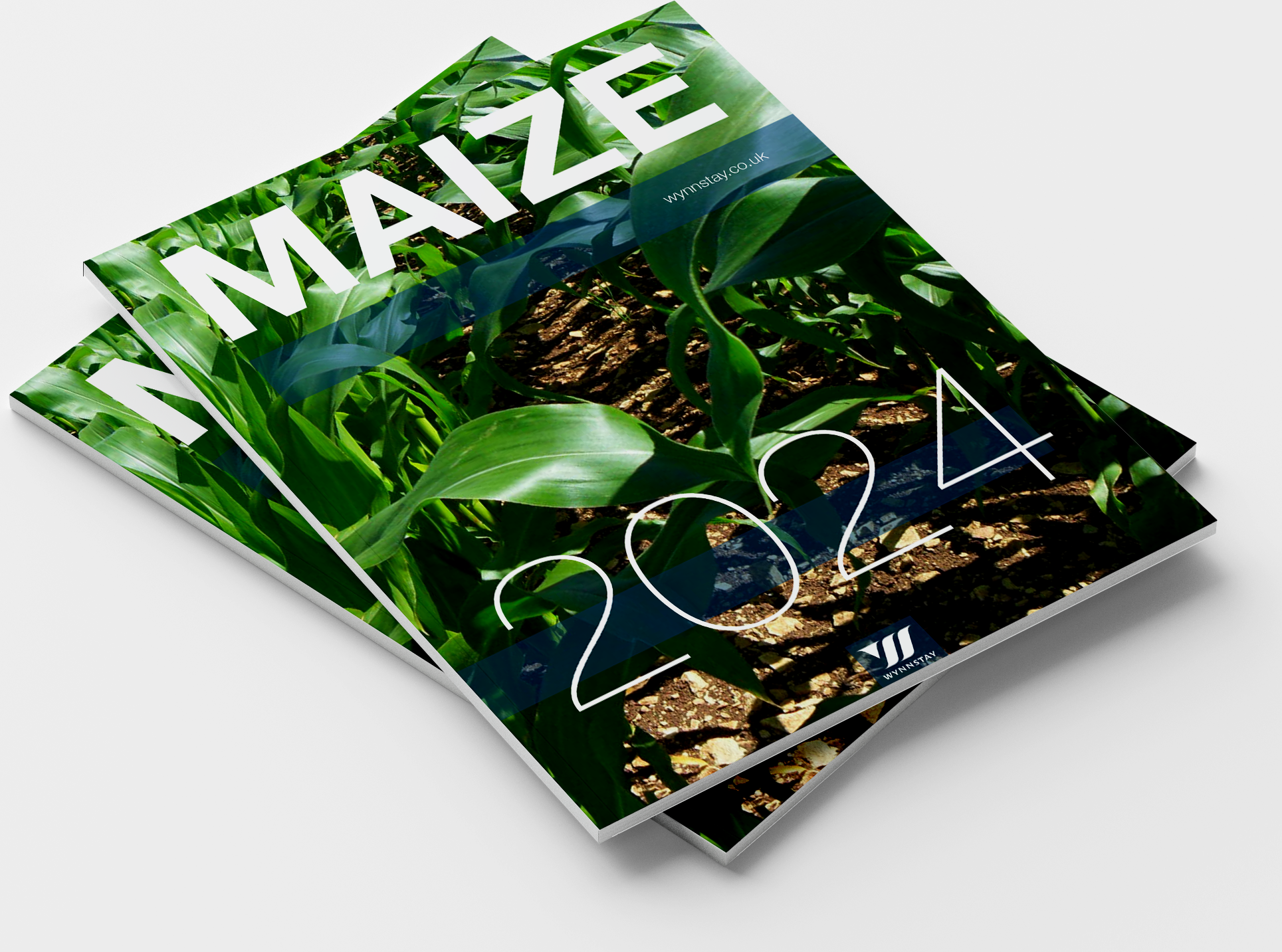In his second year of growing maize in tandem with beans, Jonathan Evans of Berry Hill Farm in Pembrokeshire has learned some valuable lessons, particularly in terms of crop establishment, variety selection and the importance of weed control.
To reduce purchased feed costs and increase home-grown protein for his 190-cow dairy herd, Jonathan Evans has harvested his second crop of maize and beans, with mixed results.
Following on from last year’s trial in which beans were undersown into maize at one to three leaves, this year’s mixture of 75% maize and 25% beans was drilled together and into a seedbed which had been prepared using min-till instead of the farm’s usual plough.
“Last year we struggled to achieve adequate levels of weed control in some fields due to a lack of soil moisture which meant pre-emergence herbicides had run out of steam by the time the beans went in,” explains Wynnstay agronomist, Lawrence Couzens.
“Being so close to the coast means the farm is naturally very dry, so this year, instead of ploughing, Jonathan switched to a min-till system to preserve some much-needed soil moisture.”
The bean and maize mixture went in after an over-winter crop of ryegrass which was burned off with glyphosate before being cultivated. A pre-emergence herbicide was then applied after the crop was sown. An inter-row weeder was also trialled in one of the trial fields, working well to remove any larger weeds, but struggling to take out some that were still at the cotyledon stage.
“One of the main lessons learned this year was just how critical it is to remove all weeds irrespective of size and species,” Lawrence explains. “Due to time constraints, some seedbeds were prepared to a higher standard than others, with those that had the best weed control producing a much stronger stand of both beans and maize.


“However, where glyphosate wasn’t used to the best effect, or in fields that didn’t receive adequate nutrients prior to planting, both crops struggled to out-compete the farm’s high weed burden with the worst affected fields being harvested early to salvage what was available.” To learn more about how maize and beans are grown together in Europe, Jonathan and Lawrence travelled to Germany to talk to growers and agronomists about the importance of variety selection.
“What we learned for next year’s crop is that we probably need to increase the ratio of beans and that we need to focus more on the maturity of the maize crop rather than that of the accompanying beans,” Lawrence explains.
“We’ve found a bean variety that complements our preferred choice of maize, Prospect, in terms of maturity timing, but we’ve also come to realise that the nature of beans – which pollinate at a range of timings – means it’s not possible for both crops to mature at the same time. It’s therefore inevitable that some of the beans will be over-ripe at harvest, but it’s more important to focus on taking the maize at the optimum time.”
Where everything went as planned, this year’s mixed crop achieved a fresh weight of approximately 18t/ac and has given the farm an extra 1% of protein.
“This year has been another steep learning curve,” Lawrence adds. “We’d have like to have seen a bigger uplift in terms of protein production, but it’s a step in the right direction.”


What wasn’t necessarily a target at the outset of the trial was the environmental benefit that the twin-cropping strategy has delivered.
“Every farmer wants to maximise crop yield and quality,” Lawrence says, “but a lot also want to achieve this in tandem with environmental improvements. The addition of beans has diversified the species composition of the farm’s maize area and it’s hoped that this will be of benefit to songbirds, pollinators and other beneficials.
“We’ll know more next year when a songbird survey is due to take place, and we’re also hoping to get a better understanding of how the maize and bean silage benefits the herd’s performance.”












